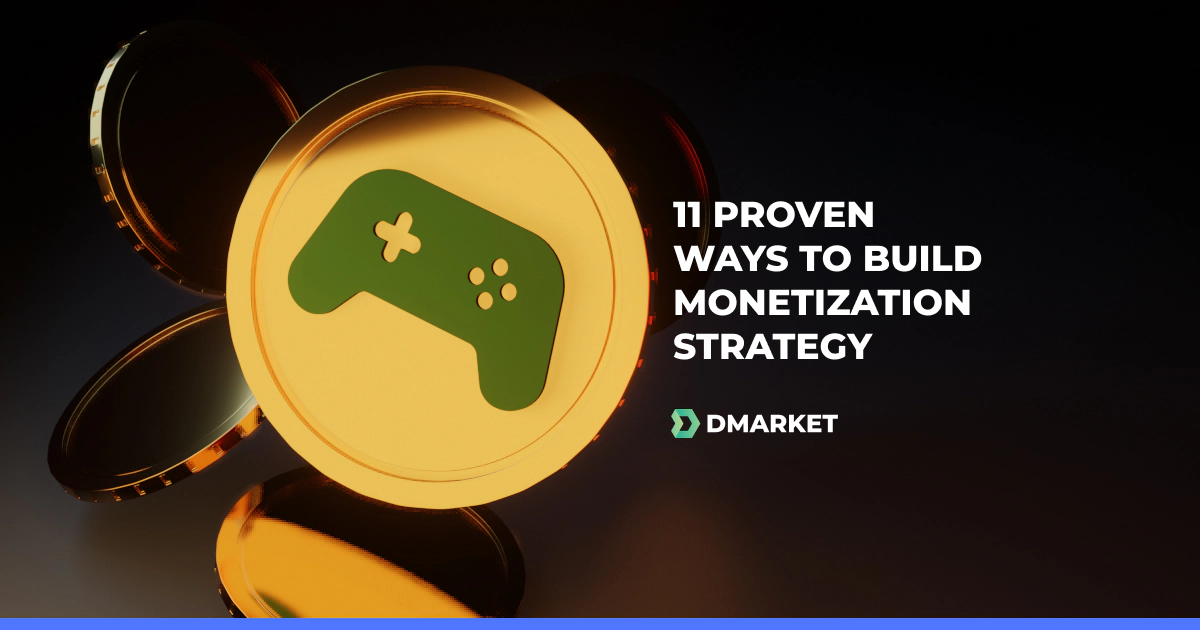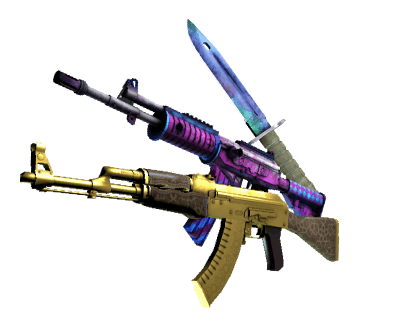11 Proven Ways to Build A Successful Monetization Strategy
Developing games is quite a complicated process nowadays. At the dawn of the gaming industry, it was instead about having an innovative idea on gameplay together with the technical understanding of how the idea could be implemented using real capabilities of the available hardware.
Modern development companies should still do the same, but on a totally different level - game ideas are multilayered pieces of art and the hardware power opens impressive possibilities. Developing games has become a costly process, and one of the biggest challenges for developers is the successful monetization of their products.
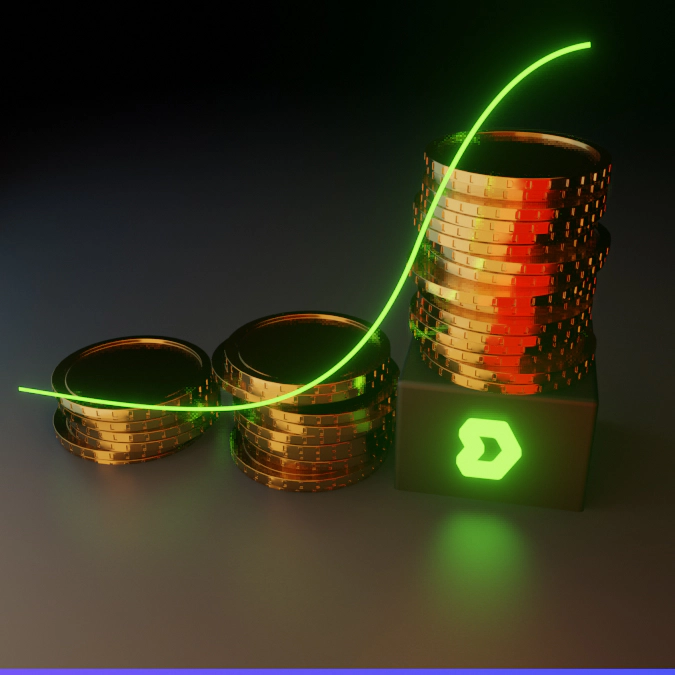
Money is needed to hire a team of professionals. Even for a two-men indie-studio you need significant funds to invest a few years of your time into the development. Midsize and big companies have lots of employees and they also spend years on the production. Another significant expense is marketing. Without letting people know about the game, it would be impossible to make it stand out in the crowd of competitors. For games as a service, marketing and development simply become ongoing expenses. So how do you cover them and make a game profitable?
This article on the DMarket blog highlights 11 ways to make a game possible and earn revenue from it. These ways have been proven by many successful projects.
Way 1 - Crowdfunding
Try and get money at the earliest stage of game development. Secure time for your team and funds for marketing and then feel free to delve into the creative process. Probably the most popular crowdfunding platform is Kickstarter - it helped, for instance, Yacht Club Games create Shovel Knight.
There are lots of tips on how to make your crowdfunding campaign successful. They can be summarized in advice such as: be open with your community. Show people your idea in all its exciting details. Share your concept art and raw gameplay mechanics. Tell potential backers the story behind your characters and their world. Be active to attract interest. And stay honest with those who support you at all stages of the game creation.
Pros:
- You feel the interest of gamers from the very beginning, and the game even gets a dedicated community.
Cons:
- It becomes harder for video games to gain funds through crowdfunding due to a big number of such projects.
- Developers become a bit limited in their creative freedom - as they have to follow their initial ideas while pleasing the community with everything they do.
Way 2 - Early Access
When your game is still unfinished but it is already playable, you can allow gamers to enjoy its early version. Players usually pay a smaller price for early access games, but for developers, this is substantial support. The very successful Battle Royale shooter PUBG was in Early Access on Steam for around eight months.
The game should be in a very good condition to get successful monetization in this way. Products with many bugs may get buried under a huge layer of negative reviews and never revive after such a shock.
Pros:
- You get testers who are ready to pay for helping you make the game better.
- The initial funds may be smaller - but then you only need enough money to reach the early access stage.
Cons:
- Early access games risk not getting enough support and can become stuck at this stage of development.
- Many gamers prefer to enjoy full games and avoid early access titles.

Way 3 - Sell the Game
This is the most traditional way to monetize games. You release a ready product and sell licenses for playing it. In the past, developers had to produce physical copies of their games and that was a costly process itself. Now, most gamers use digital distribution platforms, and almost any game can be added to their catalogs. There are lots of examples of successful games with this straightforward “buy the product” approach - Minecraft is one of the most prominent. It doesn’t even need to be on Steam to become one of the most popular games ever made.
Pros:
- The gaming community is used to paying around $60 for a big and nicely made game, and this is a good income for companies.
- Developers can decrease this price or join sales to reach a bigger audience.
- Games remain on the digital platforms for many years without any additional investments.
Cons:
- The market is overcrowded, so companies should be good at their marketing campaigns to become noticed.
Way 4 - Enable Ads
There are a lot of free-to-play games in the market, and internal advertisements allow developers to support these products. Most of such games are mobile. A good example is Subway Surfers - some advertisements are made obligatory and players can get more bonus items by watching ads.
Pros:
- It’s an easy to integrate monetization method.
- The free-to-play model opens the door to a huge gaming audience.
- Even low-budget games can succeed in this way.
Cons:
- Advertisements distract from the playing process.
- Developers should find a good balance that doesn’t ruin the playing experience.
- Only a really significant number of views can make profit from this monetization scheme.
Way 5 - Cosmetic In-game Items
Being part of a specific gaming community means to accept its rules. One of them is building a “hierarchy” of players according to their in-game achievements - this is especially true for ongoing multiplayer games. Achievements can be measured in different ways, and one of the most popular is to check the appearance of game characters and their inventories. Players pay real cash to look great in front of their online friends. For creators of Fortnite, selling cosmetic items is the primary source of income.
Here are a few examples of cosmetic items you can sell in your game:
- Weapon skins - images that change the appearance of guns and knives (like CS:GO skins);
- Characters - they may look different but have the same abilities and features;
- Battle animations - attacks and protective actions that look different but practically they are the same (an effect like Dota 2 items);
- Character animations - game heroes can move in a special way yet with no changes to the gameplay mechanics (like dances in Fortnite).
Skins do not affect the actual gameplay but some rare cosmetics then become desirable prizes for enthusiastic players. Also, such items are a powerful tool for increasing retention - people stay with the game for a chance to get free cosmetics or to show off their great skins.
Pros:
- Cosmetic items can be added to almost any game.
- Skins are perfect for games as a service.
- Developers can control the rarity of such items and release new skins regularly.
- Players can spend a very small amount of money or alternatively, invest impressive sums in the game, and this freedom of choice makes a good profit.
Cons:
- Effectiveness of cosmetics reaches its full power only with a well-elaborated implementation.
- This process asks for special expertise and a lot of attention, so it can distract developers from the main process of creating their game.
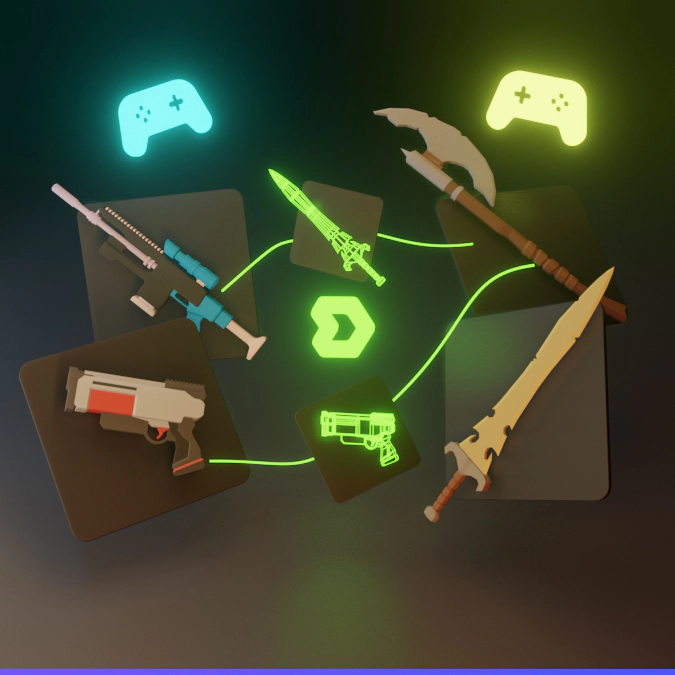
Way 6 - Practical In-game Items
Each developer should approach selling practical items very cautiously. It’s so easy to ruin the game when you trigger purchases with tricky features of gameplay - players feel this very well and often abandon products of greedy creators. Still, many mobile titles succeed in such monetization. For example, Candy Crush Saga sells various items to make completing specific levels easier.
Let’s take a look at some popular practical in-game items:
- Energy hearts - players use them to start a match or play a game level;
- Special tools - hammers that destroy lines in the “match 3” games, reviving potions, teleports, etc.
- Powerful weapons - additional strength to destroy opponents;
- Reliable armor - protection from attacks;
- Game heroes - characters with some special abilities.
The best approach here is to give players choice: either to invest their time or to invest their money. Some people will decide to improve their skills in long grinding missions, but others will prefer to pay and skip repetitive actions.
Pros:
- Players get a strong motivation to purchase items in the game store.
Cons:
- It’s really hard to keep the balance in the gameplay and general playing experience.
- Poorly implemented practical items can ruin the reputation of the game and its developer.
Way 7 - Subscriptions
The whole game or just some parts can be available only by subscription. An ultimate version is World of Warcraft - you can’t enter the game without paying a subscription.
Many developers offer special missions inside their games. Players pay for a battle pass and get access to unique maps and quests. Often, this type of subscription opens access to a variety of limited edition cosmetic items and collectibles. A good example of subscriptions with additional content is Apex Legends with its Battle Pass for new in-game seasons.
Pros:
- Subscription is a good way to support games as a service.
- Players love additional content in their favorite games and may willingly pay for it.
Cons:
- Only very popular brands can succeed in offering subscriptions.
Way 8 - DLCs
This is a good additional monetization for both story-driven adventures and multiplayer games. When players have nothing to enjoy in the core game, developers release new levels, new characters, and new missions. In fact, any additional content will be good for paid DLCs - for developers, it’s not only a source of income but also an excuse to continue working on a game they love so much. Destiny 2 got two big DLCs (expansion packs): Forsaken and Shadowkeep, with many more possible in the future.
Pros:
- People love having new adventures in familiar worlds.
- The production expenses for DLCs are usually smaller than for developing a new game.
Cons:
- Developers should have really good ideas to not disappoint their fans - it may cause a disaster if you try to milk the same game again and again.
- DLCs can’t cover the expenses for the original release.
Way 9 - Trades between Users
It would be a clever decision to foresee in your monetization strategy any possibilities to increase customer retention. If players have the possibility to sell items to other players, they will be more interested in visiting this game again and again, spending their time and money. Team Fortress 2 is quite a good example of such an approach - the game has its internal store, but players are free to sell their items through the Steam market.
Pros:
- Players get the additional motivation to launch your game as they try and win valuable cosmetics.
- Developers earn revenue from each transaction that involves real cash.
Cons:
- It’s not easy to implement this type of in-game economy and most of the developers just don’t have any possibility to do this on their own.
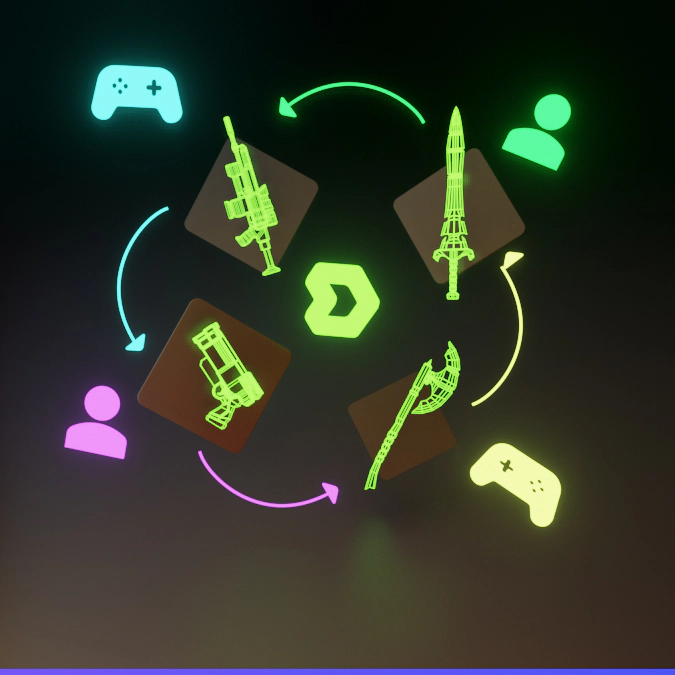
Way 10 - Trades between Games
Players would invest their time in games more willingly if they know that this investment will not disappear at the end of this adventure. Trades between games allow both a transfer of experience and energy from one gaming world to another. Both developers get revenue from such transactions because they can proceed only through a specialized marketplace - and DMarket is the perfect platform to make this miracle possible.
Pros:
- Your game gets the attention of a big audience including gamers and traders.
- Players become more active in products, connected to such inter-gaming trades.
- The revenue of developers then comes from the transaction fees.
Cons:
- Developers may need to be brave enough to think outside the box.
Way 11 - Make a Very Good Game
It’s an obvious thing to say, but still, this way is the most powerful - and it’s the basis for all of the others:
- A good game idea can easily get money from crowdfunding.
- People buy a good game in its early access and after release.
- Nicely integrated ads bring significant revenue from a good game.
- Players purchase both cosmetic and practical items.
- The customers are ready to pay for subscriptions and DLCs.
- A good game generates lots of internal transactions.
- Other developers will be glad to connect their products to inter-gaming trades with a good game.
Pros:
- Lots of positive reviews, many active players, and impressive revenue.
Cons:
- There is no pre-made recipe on how to make a good game.
Monetize Your Game with DMarket
It’s better not to be a lonely warrior on the challenging ground of game creation. As an in-game item trading platform, DMarket offers a solution for many of the ways mentioned here to build a successful monetization strategy:
- For Ways 1 and 2 - sell bundles with in-game items for your upcoming game, make them rare so traders will be interested in selling them later on and players will be interested in possessing them within their collections.
- For Ways 3 and 7 - many players will purchase a game/pay a subscription if they can sell items for real cash. DMarket has an impressive audience, so you automatically get clients for your product.
- For Ways 5 and 6 - professionals at DMarket will help you build an items-based game economy. The team behind our platform have many years of experience in this business, they can help with creating an items store through an easy-to-use DM admin panel. Each item will have an individual page that earns organic traffic from search engines.
- For Ways 8 and 9 - DMarket has a software solution for enabling internal and external trades with revenue for developers from every transaction.
- For Way 11 - thanks to DMarket you will be able to concentrate on the creative process and get enough funds to make a very good game.
DMarket is open to cooperation with game developers regardless of their company size and the development stage of their product. Recently, we added Life Beyond to our ecosystem. Let your game be next on the way to financial success!











